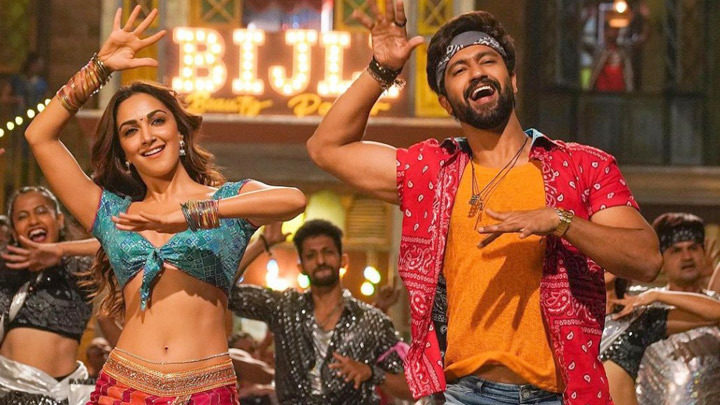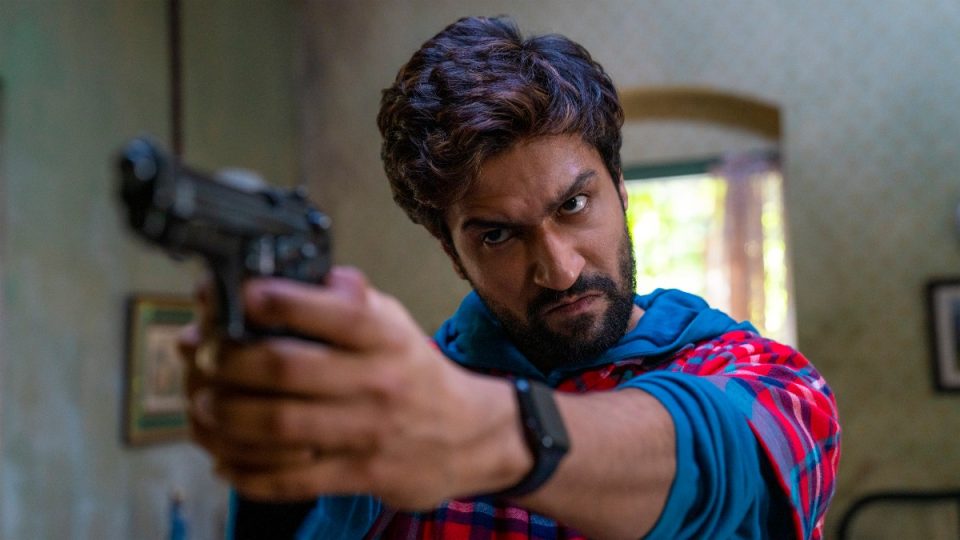
‘Govinda Naam Mera’ review: Vicky Kaushal lights up a convoluted underdog comedy
Vicky Kaushal, one of the most gifted actors of the generation, has a lot of fun unleashing his sparkling comic timing in this otherwise indulgent and bloated Dharma Productions' drama, helmed by Shashank Khaitan

It’s apt that so much of the double-crossing in Shashank Khaitan’s Govinda Naam Mera revolves around owning a house in Mumbai, the congested city that demands immigrants pay through the roof in order to afford a roof over their heads. Real-estate is, after all, Mumbai’s true currency.
The film realizes that: Background dancer Govinda Waghmare (Vicky Kaushal) and his step-brother Vishnu (Akkshay Gunaawat) are at loggerheads to stake their claim on a decaying bungalow built by their late father. Govinda’s wife Gauri (Bhumi Pednekar) occupies the bungalow as if she is the rightful owner. His background dancer girlfriend Sukku (Kiara Advani) agrees to con him when Vishnu offers her a three-bedroom apartment in Andheri.
Even Vishnu’s attempts at reaching an out-of-court settlement for the bungalow include offering two rooms in a chawl to his estranged mother. That neither of the characters gets the square feet they deserve feels emblematic of the punishing grind that accompanies making space for yourself in Mumbai.
Small, unexpected flourishes
The pleasures of Govinda Naam Mera — otherwise an indulgent and bloated underdog drama — stems from these small, unexpected flourishes. Take for instance, the film’s casting: Vicky Kaushal, one of the most gifted actors of the generation, is finally afforded a role that’s not really concerned with the inner workings of courage or conscience.
Playing Govinda, a naive, out-of-luck struggler allows Kaushal the chance to unleash his sparkling comic timing and commendable dancing skills with carefree abandon. Even his outbursts here are doused in ample fun. It helps that Kaushal makes the tiniest gestures count — in one scene for instance, the actor relays Govinda’s shrewdness with just a turn of phrase. In another, Kaushal articulates the character’s emasculation with simple body language: midway through his impromptu dance routine, he stops and stares, his face and spirits instantly falling when Gauri makes fun of his moves.
Also read: ‘Qala’ review: A sensual mood piece, a strange little psychological puzzle
Clever still is Khaitan utilising Kaushal’s reputation of playing vulnerable male heroes invested in doing the right thing to the film’s advantage, making him come across as someone utterly incapable of treachery. So, when Govinda actually manages to pull off a con, it feels all the more satisfying.
I particularly liked another sequence where Khaitan uses camerawork and a change of perspective to reveal a ruse: when the song “Bijli” starts, we see Govinda and Sukku dancing together and assume that they’re in the foreground of the attention. But it’s only at the end that we realize what we’re seeing — two people frustrated with being relegated to the background imagining themselves in the spotlight. Working with cinematographer Vidushi Tiwari, Khaitan beautifully uses a tracking shot to reveal that Govinda and Sukku are actually dancing way behind the song’s actual leads. (After Anushka Sharma in Qala, Ranbir Kapoor turns in an enjoyable cameo as a superstar in a Hindi film this year.)
A gap in the narrative
If Govinda Naam Mera feels like it undermines its own potential, it’s solely because of the disconnected storytelling. The crucial problems that afflict the film feel like standard Dharma Production missteps. The biggest sore thumb is the film’s wafer-thin screenplay (Khaitan is credited for the script as well). Contrivances abound in the plot, chief of which is Khaitan’s insistence on drumming up sympathy for Govinda’s bad luck at every opportunity possible. I wish he didn’t feel the need to constantly victimize his lead so much considering Kaushal’s committed turn situates the character as a victim of his circumstances anyway.

It’s also telling that despite the overlong 131 minute-long-runtime of the film, the screenplay is unable to offer layered character arcs to any of its characters — especially its three leads. Character motivations, anxieties, or even desires are conveniently glossed over so much so that the protagonists end up resembling tropes. Take for instance, the lack of clarity over the romantic arrangement that is central to the film’s plot: Govinda is married to Gauri but is also in love with Sukku and both women seem to be well aware of each other’s existence.
Not once does the film make it exactly clear if Govinda and Gauri were ever in love or offer any explanation for Govinda falling for Sukku (Dowry is brought up as a potential cause once only to be discarded promptly). Expecting the audience to buy into a narrative gap instead of making a narrative believable remains Khaitan’s approach for much of the film. If anything, it tends to affect Kaushal’s chemistry with the two actresses, which remains bland for the most part.
One-note characters, forced comedy
Still, it’s the film’s female characters who suffer the worst blows of the half-baked characterisation. Neither the effervescent Pednekar nor Advani boast any character development divorced from serving the needs of the hero. Both actors are dumped with one-note characters, which are really tired tropes — Gauri is the domineering wife and Sukku is, naturally, the bubbly girlfriend. Advani, in particular, is lacklustre and lazily-directed; the actress might gain from not agreeing to playing iterations of the same role in every film. Renuka Shahane, who plays Govinda’s mother, is reduced (quite literally) to an actual punchline. Even the lively Trupti Khamkar doesn’t really play a househelp as much as she is forced to essay a caricature of it.
Also read: ‘Bhediya’ review: No hour of the werewolf — A roar that’s more of a whimper
That Khaitan isn’t a filmmaker with a light touch is evident in just how prone he is to indulgence. Govinda Naam Mera is overcrowded with unmemorable supporting characters (Khaitan makes an unnecessary appearance himself as a real-estate developer) and gags that do little to develop the plot. Instead, it draws out the film’s silly premise to exhaustion. In fact, Govinda Naam Mera visibly displays Khaitan’s flaws as a comedy director — not one moment in the film is allowed to breathe without the filmmaker force-fitting a comical element to it, whether through heightened physical caricatures or obnoxious background music. It is this desperation to consistently earn laughs that renders the film insipid.
Sanitised characters, setting
But what feels the most unforgivable about Govinda Naam Mera is that the film continues to perpetuate the kind of discouraging filmmaking choices that Dharma projects are constantly criticized for. Much of the film’s heavy-handedness stems from Khaitan’s reluctance to root the plot to its social milieu without erasing its context altogether. The film’s setting, for one, feels wholly artificial.
On paper, Govinda, Sukku, and Gauri are meant to represent the lower class of society, a group of people deemed strugglers from the moment they’re born. On screen, Khaitan struggles to convey their economic anxieties through their surroundings simply because of how the filmmaker chooses to turn the marginalised into an aesthetic. Advani’s styling, specifically, reflects that — the actress dresses like any other millennial and not like a struggling artist trying to fit in as a millennial despite limited means. The characters feel as sanitised as their setting.
A glaring evidence of this erasure lies in Khaitan’s reading of Govinda Waghmare’s standing in society — nowhere does the film acknowledge Govinda’s caste despite identifying him as someone who belongs to a backward caste. Granted, the very expectation that a Dharma film helmed by Shashank Khaitan would address the hierarchies of caste remains unfounded.
But I’ll still say this: it’s a clear mark of dishonesty on the part of any filmmaker to imagine a lower caste character as a lead and then also erase markers of caste from their onscreen identity. It’s worth noting here that Khaitan is a repeat offender — he previously directed Dhadak (2018), another Dharma project that neglected to mention caste in a story about caste atrocities. It doesn’t matter whether a film intends to entertain or educate, one thing is for certain — mainstream Hindi filmmakers shouldn’t be getting away with reducing representation to tokenism.


